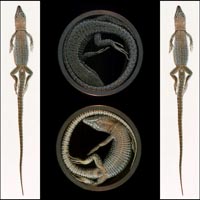Classifying and copying from reality has always been a human ambition and a creative act. Since the XIX century, classifying grows enormously under the impulse of positivism and, to a certain extent, becomes a religious act. In the XVIII century, Linneo, the Swedish botanist, classified all the plants in families, but it is Darwin who gives a definitive impulse to the understanding and classifying of nature after the publication of his book The Origin of Species.
Photography developed with positivism because photography, as any science is a way to frame, classify and name reality. Therefore, photography is a tool that helps understanding the world. The fact that some XIX century scientists such us Henry Fox Talbot became interested in photography is not surprising. Talbot made vegetable repertoires using photo sensitive papers that he called shadowgraphs. Anna Atkins and Hippolyte Bayard also made some important photographic plant collections.
However, photography not only helped classifying nature but also changed our understanding of the world due to the process of exhaustive fragmentation of reality that photography permitted.
This photographic portfolio is feed from positivism, nature, science but also art and photography. That is why this work is rooted in an old photographic technique, the photogram. However, I have transformed the photogram into a digital experience by the intensive use of the flat scanner. The resulting work I call “digitograms”. Departing from conventional cameras and a subversive use of technology provides a new aesthetic experience that I apply to the realm of nature and science, mainly, to build up “Herbariums” and “Bestiariums”.
Following the steps of scientific systematization, I have developed an artistic approach to nature, an aesthetic debate between order and chaos, passing and remaining, live and death. In order to find order and understanding I have looked closely at nature, isolating its living creatures from their context.
Artists such as Becher, Richard Ross or Adam Fuss seem to belong to what has been called “new-objectivity” that shares some of the features of my work to a certain extend: an interest in positivism and taxonomy, an unconventional use of hardware and an aesthetic approach to representation.

